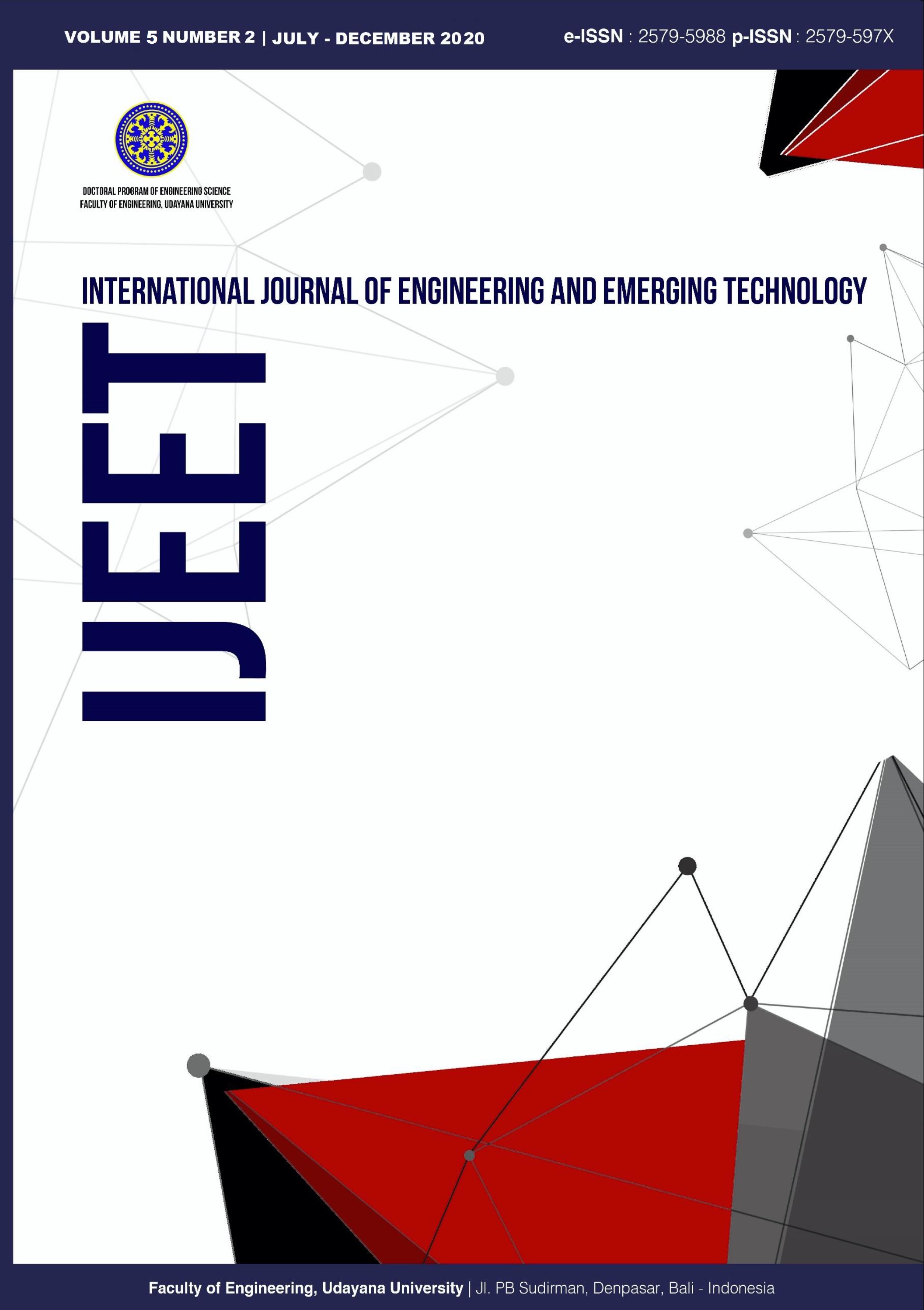Analyzing Passenger Car Equivalent for Motorcycle on Mixed Traffic Flows in Denpasar City during the COVID-19 Pandemic
Abstract
Passenger Car Equivalent (PCE) is the conversion factor of various vehicle types into passenger car units. Characteristics and geometric road conditions affect the PCE value. The PCE value on urban roads has been determined in the Indonesian Highway Capacity Manual (IHCM) in 1997. Previous studies show that the PCE value for motorcycles according to IHCM isn‘t appropriate. The COVID-19 outbreak that occurs at Denpasar in early March 2020 led to a policy to restrict community activities outside the home, affects the traffic flow conditions in Denpasar City. The study's aim is to estimate the PCE value for the motorcycle at COVID-19 pandemic on mixed traffic flows in Denpasar and compare it with the PCE value in the IHCM. The PCE value is determined using the time headway method. The analysis results show the PCE value of the motorcycle during the COVID-19 pandemic was different from the PCE value of the IHCM.
Downloads
References
[2] P. Saha, Q. S. Hossain, H. M. I. Mahmud, and Z. Islam, “Passenger car equivalent (PCE) of through vehicles at signalized intersections in Dhaka metropolitan city, Bangladesh,” IATSS Research, vol. 33, no. 2, pp. 99–104, 2009, DOI: 10.1016/S0386-1112(14)60248-X.
[3] J. S. Yeung, Y. D. Wong, and J. R. Secadiningrat, “Lane-harmonised passenger car equivalents for heterogeneous expressway traffic,” Transportation Research Part A: Policy and Practice, vol. 78, pp. 361–370, 2015, DOI: 10.1016/j.tra.2015.06.001.
[4] D. Branston and H. van Zuylen, “The estimation of saturation flow, effective green time and passenger car equivalents at traffic signals by multiple linear regression,” Transportation Research, vol. 12, no. 1, pp. 47–53, Feb. 1978, DOI: 10.1016/0041-1647(78)90107-7.
[5] R. M. Kimber, M. McDonald, and N. Hounsell, “Passenger car units in saturation flows: Concept, definition, derivation,” Transportation Research Part B: Methodological, vol. 19, no. 1, pp. 39–61, Feb. 1985, DOI: 10.1016/0191-2615(85)90028-1.
[6] H. S. L. Fan, “Passenger car equivalents for vehicles on Singapore expressways,” Transportation Research Part A: General, vol. 24, no. 5, pp. 391–396, Sep. 1990, DOI: 10.1016/0191-2607(90)90051-7.
[7] N. Webster and L. Elefteriadou, “A simulation study of truck passenger car equivalents (PCE) on basic freeway sections,” Transportation Research Part B: Methodological, vol. 33, no. 5, pp. 323–336, Jun. 1999, DOI: 10.1016/S0965-8564(98)00036-6.
[8] S. Putra, “The correction value of passenger-car equivalents for motorcycle and its impact to road performance in developing countries,” Procedia - Social and Behavioral Sciences, vol. 16, pp. 400–408, 2011, DOI: 10.1016/j.sbspro.2011.04.461.
[9] A. E. Juniardi, “Value analysis of passenger car unit equivalent motorcycle (case study Kartini road Bandar Lampung),” in 2nd International Conference on Engineering and Technology Development (ICETD 2013), 2013, pp. 337–346.
[10] Najid, “Evaluation passenger car unit for motorcycle in Indonesia Highway Capacity Manual (Case study: Bandung and Semarang),” MATEC Web of Conferences, vol. 181, pp. 1–13, 2018, DOI: 10.1051/matecconf/201818106006.
[11] M. S. Surbakti and I. Sembiring, “Passenger car equivalents of becak bermotor at road segment in Medan,” IOP Conference Series: Materials Science and Engineering, vol. 309, no. 1, 2018, DOI: 10.1088/1757-899X/309/1/012105.
[12] S. Sugiarto, F. Apriandy, R. Faisal, and S. M. Saleh, “Measuring Passenger Car Unit (PCU) at Four Legged Roundabout using Time Occupancy Data Collected from Drone,” Aceh International Journal of Science and Technology, vol. 7, no. 2, pp. 77–84, 2018, DOI: 10.13170/aijst.7.2.8587.
[13] Anonim, Bali in Figures 2020. Denpasar: Bali Statistics Central Bureau, 2020.
[14] I. G. R. Purbanto, “Determining Passenger Car Equivalent for Motorcycle at Mid-Block of Sesetan Road,” Applied Mechanics and Materials, vol. 776, pp. 95–100, 2015, DOI: 10.4028/www.scientific.net/amm.776.95.
[15] R. J. Salter and N. B. Hounsell, Highway Traffic Analysis and Design, Third Edit. New York: Palgrave, 1996.
[16] M. Adnan, “Passenger car equivalent factors in heterogenous traffic environment-are we using the right numbers?,” Procedia Engineering, vol. 77, pp. 106–113, 2014, DOI: 10.1016/j.proeng.2014.07.004.
[17] T. Rongviriyapanich and C. Suppattrakul, “Effects of Motorcycles on Traffic Operations on Arterial Streets,” Journal of the Eastern Asia Society for Transportation Studies, vol. 6, pp. 137–146, 2005, DOI: 10.11175/easts.6.137.

 Indexed By
Indexed By







